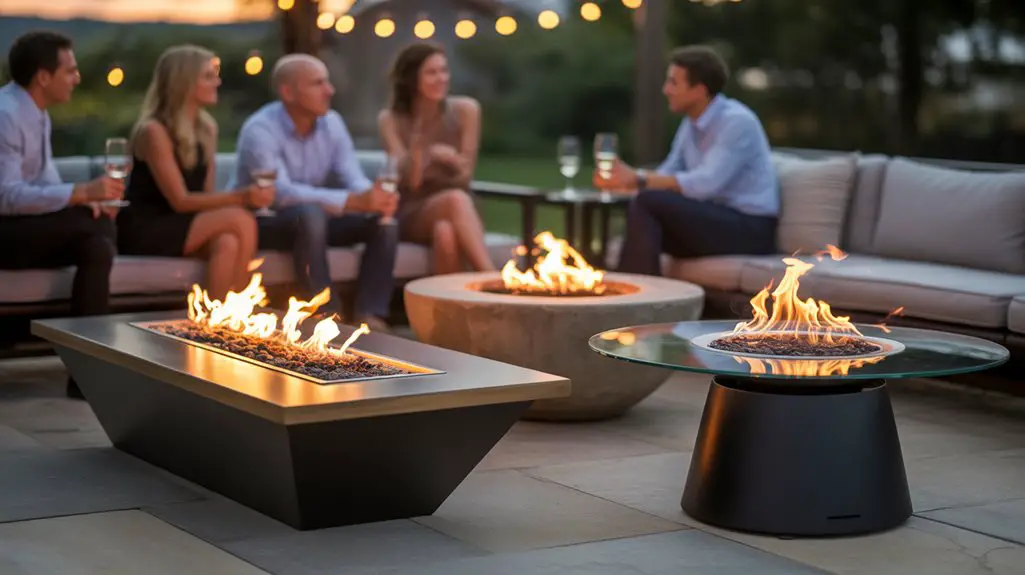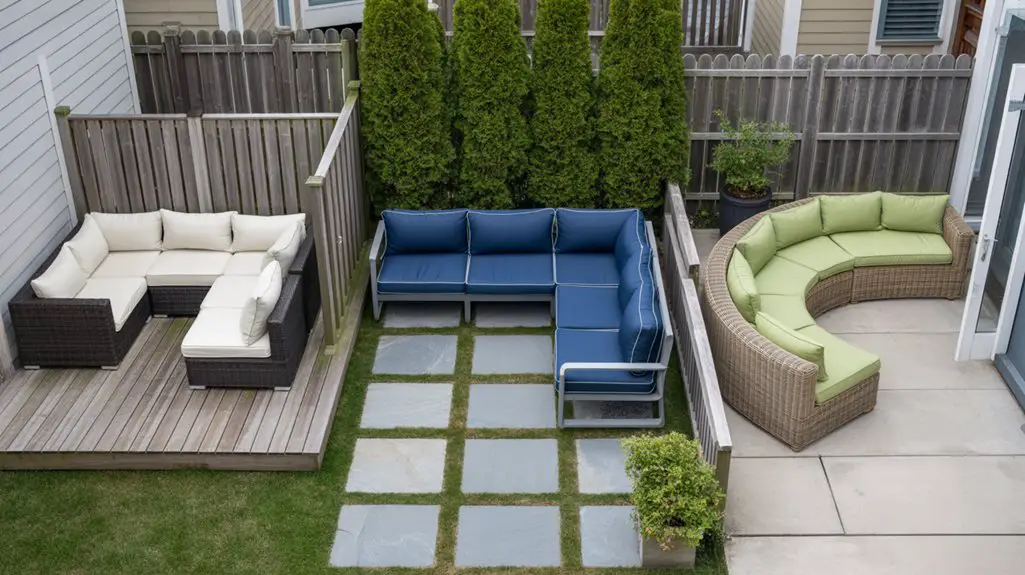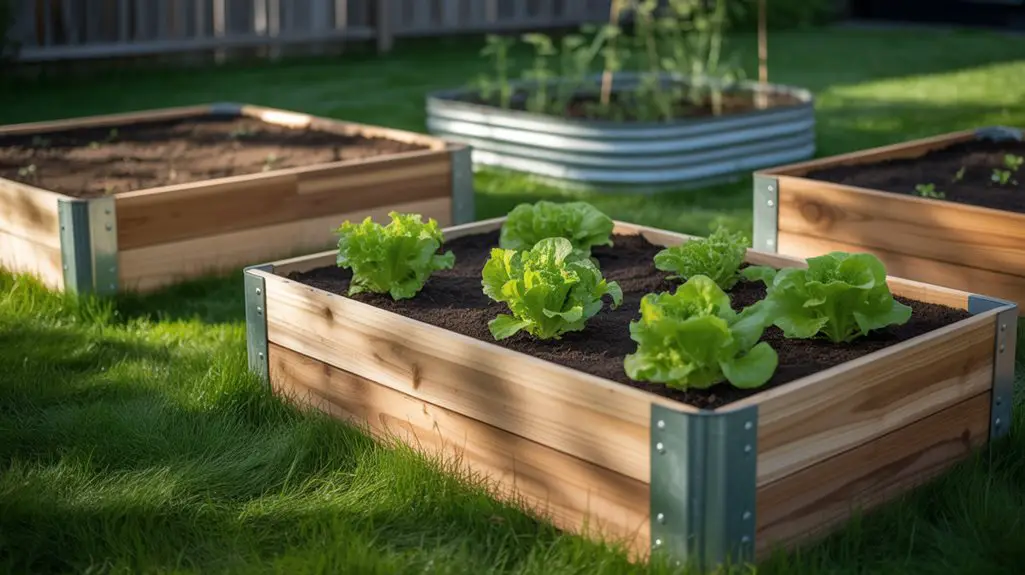You’ve likely encountered the challenge of creating shade in your compact outdoor sanctuary. When space constraints limit traditional solutions, innovative approaches become essential. Like the desert beetle that collects water droplets on its textured back, your patio can employ specialized structures that maximize functionality within minimal dimensions. Strategic placement of adjustable elements allows for adaptable microclimate control as the sun traverses the sky. The intersection of biomimetic principles and spatial efficiency opens possibilities you haven’t yet considered.
Retractable Awnings for Space-Saving Shade
When considering shade solutions for compact outdoor areas, retractable awnings emerge as the quintessential adaptive mechanism. These articulating canopies mimic the unfurling motion of plant leaves, extending precisely when solar protection is required and retracting when not in use.
You’ll appreciate how these systems operate within constrained spatial parameters, requiring minimal structural footprint while maximizing functional coverage. The tensile fabric membranes deploy along precision-engineered tracks, creating microclimates beneath their span by reducing ambient temperatures 8-15°F.
For your diminutive terrace, select models with lateral arm mechanisms that eliminate the need for vertical supports. Contemporary systems feature wind sensors that automatically retract at threshold velocities, preventing structural compromise during adverse weather conditions. Their biomimetic design principles offer the adaptability you need in fluctuating environments. Additionally, creative shade structures can enhance your outdoor experience while providing functional benefits.
Portable Umbrella Solutions for Tiny Patios

Versatility defines portable umbrella systems as the archetypal shade solution for spatially constrained exterior environments. These biomimetic structures deploy and retract like avian appendages, optimizing your limited square footage through adaptable positioning mechanics.
When selecting a portable system for your diminutive outdoor zone, consider:
- Cantilevered models that eliminate central pole obstructions
- Offset mechanisms allowing wall-adjacent placement to maximize floor clearance
- Weighted bases integrating secondary functions (planters, side tables)
- UV-resistant fabrics with strategic perforation patterns for localized temperature regulation
An important aspect of these systems is their ability to provide natural shade solutions, which can enhance your outdoor experience while protecting you from harsh sunlight.
The most efficient implementations feature minimal footprint-to-coverage ratios and incorporate rotational axes for tracking solar trajectories throughout the day.
Your compact patio gains dimensional flexibility through these deployable membranes, transforming previously unusable sun-drenched zones into habitable microclimates.
Vertical Shade Sails Perfect for Limited Areas

Three fundamental advantages position vertical shade sails as ideal solutions for spatially constrained environments.
First, their orthogonal deployment maximizes coverage while minimizing horizontal footprint—essential for balconies and narrow patios where ground space is premium.
Second, vertical orientation creates multi-dimensional shading that adapts throughout the day as the sun traverses, mimicking the protective canopies found in dense forest understories.
You’ll find installation requires minimal anchor points—typically one wall connection and one or two ground tensioners.
Select UV-resistant fabrics with 90-95% blockage ratings for peak protection. The triangular and quadrilateral geometries allow for customized configurations that conform to irregular spaces.
Unlike horizontal installations, vertical sails generate beneficial airflow patterns, creating cooling microclimates beneath.
They’re also easily retractable during high winds, enhancing their functionality in variable conditions. Additionally, incorporating functional outdoor kitchen designs can further optimize these small spaces for entertaining and dining.
Wall-Mounted Pergola Alternatives
Wall-mounted pergola alternatives offer architectural solutions that extend beyond vertical fabric systems while maintaining minimal footprint requirements.
These structures anchor directly to existing walls, eliminating the need for support columns that consume valuable floor space.
- Cantilever brackets – Extend lightweight aluminum or steel frames 4-6 feet from walls, mimicking tree branch structures with load distribution calculations.
- Retractable awnings – Deploy biomimetic folding mechanisms inspired by bird wings, providing 90+ square feet of coverage when needed.
- Wall-mounted louvered systems – Adjust precisely like gills to control light penetration based on sun position.
- Modular green screens – Combine structural elements with climbing plant infrastructure, creating living shade that responds to seasonal patterns.
For tight urban spaces, these wall-integrated systems maximize your usable square footage while maintaining essential overhead protection from elements. Additionally, selecting the right patio shade options can enhance both comfort and aesthetic appeal in small areas.
Multi-Functional Shade Furniture for Small Decks
When space constraints demand maximum efficiency, multi-functional shade furniture emerges as a dual-purpose solution that integrates protective overhead elements directly into seating and table designs.
These adaptive pieces mimic natural structures—like unfurling leaves—with cantilevered umbrellas that extend from chair backs or table centers on adjustable armatures.
Consider modular bench systems with built-in retractable canopies that create adaptable microclimates within your spatial footprint.
Compression-folding shade screens deploy from storage compartments beneath seating surfaces, offering 120° rotational coverage.
The technical advantage lies in their biomimetic joints that allow instantaneous reconfiguration as sun angles shift.
These solutions optimize your deck’s functional density coefficient by eliminating redundant spatial allocations for separate shade structures and seating elements—a vital consideration when working with dimensions under 100 square feet. Additionally, integrating shade ideas for patios can enhance the overall aesthetic while providing effective protection from the sun.
DIY Canvas Canopy Projects on a Budget
Creating affordable shade solutions becomes attainable through DIY canvas canopy projects that maximize protection while minimizing financial outlay.
Canvas offers durability while remaining lightweight—ideal for small-space applications where structural support might be limited. Weather-resistant shade options are essential for ensuring longevity and functionality in outdoor settings.
Employ these budget-friendly canvas solutions:
- Triangular sail canopies – Install using existing attachment points like walls, posts, or trees; overlap multiple triangles for complete coverage.
- Retractable track systems – Mount industrial curtain tracks to ceiling/pergola, allowing for canvas panels to slide open/closed as needed.
- Roman shade configuration – Utilize pulley mechanics inspired by traditional window treatments, scaling up for horizontal deployment.
- Tension-based stretching techniques – Mimic biological membrane structures with grommets and bungee cords for flexible, storm-responsive coverage.
These adaptable solutions transform confined patios into comfortable microclimates while preserving spatial economy.
Container Plants as Natural Shade Elements
Natural vegetation strategically deployed in containers serves dual functions as both aesthetic elements and biomimetic shading mechanisms for constrained outdoor environments.
Select tall-growing species like bamboo, canna lilies, or ornamental grasses that achieve vertical prominence while requiring minimal horizontal footprint.
Position containers at your patio’s western exposure to intercept afternoon solar radiation. You’ll maximize shade efficacy by arranging plants in graduated height configurations, creating microclimatic cooling zones beneath their canopies.
Consider vining specimens trained on portable trellises—morning glories, clematis, or passion flower—which rapidly establish vertical green screens.
Integrate deciduous and evergreen species for seasonal adaptability; you’ll benefit from solar gain during winter months while maintaining cooling biomass during peak summer temperatures.
Container mobility allows for spatial reconfiguration as solar angles shift throughout the year, optimizing your microclimate through strategic biophilic deployment. Additionally, incorporating low-maintenance vertical gardens can enhance your outdoor space with minimal upkeep.
Weather-Resistant Shade Solutions for Year-Round Use
For residential environments exposed to multiple meteorological stressors, weather-resistant shade installations must integrate durability metrics that transcend seasonal changes.
You’ll need materials engineered to withstand UV degradation, precipitation cycles, and thermal fluctuations while maintaining structural integrity in your limited spatial parameters.
Consider these biomimetic options that adapt to environmental conditions:
- Marine-grade polymer canopies with hydrophobic surface technology
- Retractable Sunbrella® awnings with wind sensors that automatically close at 28+ mph
- Polycarbonate pergolas with integrated snow-load distribution systems
- Nano-coated fabric sails with self-cleaning lotus-effect surfaces
Select solutions with modular attachment points for versatility during seasonal shifts.
Ideal weather-resistant options maintain their protective capabilities without compromising spatial economy—essential for compact patios where each component must perform multiple functions. Additionally, exploring permanent shade structures can provide enhanced stability against harsh conditions.
Conclusion
You’ve now transformed your minimal outdoor habitat into a microclimate of thermal regulation, haven’t you? Like the Namibian fog-basking beetle harvesting moisture from air, your space-optimized shade solutions capture comfort from hostile solar radiation. The structural integrity of your modular systems—whether wall-anchored or free-standing—demonstrates your adaptation to spatial constraints with technical precision. Don’t worry; your neighbors aren’t jealous of your biomimetic patio engineering. They’re simply phototropically challenged.




